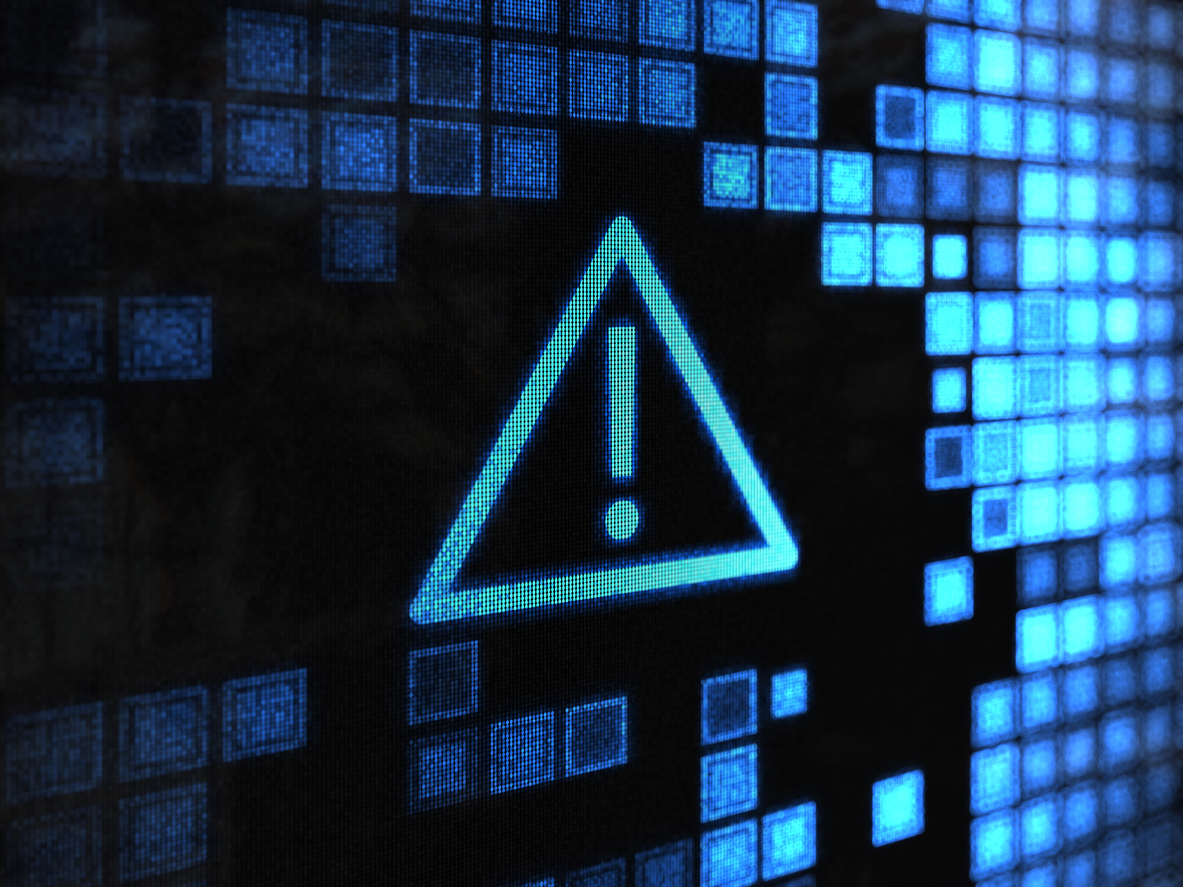- Articles
- How to Protect Your Company from Rogue Softwa...
Table of Contents
A rogue software attack is a nightmare.
Imagine getting into the office and seeing your colleagues all gathered around in small groups staring at their computer screens. Someone tells you that all the company PCs are down, and all they display is a pop-up message saying you have a virus on your system.
You panic and decide to follow the instructions displayed on the pop-up – you download a clean-up tool and pay for an expensive subscription.
But instead of solving the issue, more problems start to pop up across your IT system, and you come to a worrying realization – you’ve fallen victim to a rogue software attack.
This marks the beginning of a long and complex recovery process, one that you could have avoided by taking proper precautions against rogue malware.
Now snap back to reality and breathe a sigh of relief – that was just a simulation.
But keep reading if you want to learn what rogue software is, see examples of it in action, and, most importantly, learn how to stop attacks from paralyzing your company’s IT systems.
What Is Rogue Software?

Rogue software – also known as rogue malware – is software used in internet fraud that relies on malicious code to trick users into believing that their device is infected by a virus and gets them to pay for a fake malware removal service. Without advanced threat protection, you can easily fall victim to this type of cybercrime.
Rogue software displays a fake pop-up message telling you that your device is infected by a virus – mirroring the actions of a legitimate antivirus.
But the deception here is that there’s no virus on your IT system.
Rogue security software typically costs the unsuspecting victim a substantial amount of money by:
- Requesting payment for a premium virus removal tool
- Using this fake clean-up tool to:
- Ask you to download more tools and services
- Steal financial information
- In rare cases, also stealing and distributing customer data
The fake tools then introduce or install malware on your device and lead to a host of other problems.
So, you should just ignore the rogue pop-up message, right? Well, not quite.
Rogue software is still on your computer. If left unchecked, rogue software causes device performance issues because its main goal is to convince you that the device is infected.
Rogue security software is a form of scareware or ransomware. It relies on social engineering and plays with psychology to manipulate people through fear.
Most rogue software also has a Trojan component – usually malware that misleads users of its true intention. These Trojan components are typically disguised as:
- Multimedia codecs needed to play a video clip
- Browser extensions or plug-ins like a toolbar
- A free online malware-scanner
- An email attachment that seems like an image, file, or screenshot
- Software distributed through peer-to-peer networks
This Trojan component can be delivered as a “drive-by download” that takes advantage of vulnerabilities existing within PDF viewers, email clients, or web browsers.
Drive-by downloads can install themselves without the user’s consent or any manual interaction. There are two ways this is accomplished:
- Unauthorized drive-by downloads
- Authorized drive-by downloads
Authorization can be cleverly disguised. For instance, an annoying pop-up ad comes up on your screen. Naturally, you click the cross button to close, but this action signals user content to the malware you’re about to download inadvertently.
Cyber criminals are always developing sneakier, more sophisticated rogue security software. One of which is a technique called SEO poisoning.
This is where fraudsters buy and infect URLs with malware, then push them to the top of legitimate Search Engine Results Pages (SERPs). They can use recent news events as click bait to attract people.
Most of these URLs look like sensational information, and once you click on it, you will be redirected through a series of sites that leads to a landing page suggesting that your computer is infected, and a link is provided to “fix the problem.”
Once you click that link, you unintentionally download the malware.
What’s scary is the fact that in 2010, 11,000 domains were hosting rogue anti-virus software – we can only imagine how many there are today.
4 Examples of Rogue Software

Let’s start with a list of some of the more common rogue security software examples.
|
Rogue software |
How it works |
|
SpySheriff |
It disguises itself as anti-spyware software that protects a computer from being tracked |
|
PCSecureSystem |
It falsifies scan results and sends false pop-up alert messages to get victims to buy the full version |
|
AntivirusMaster |
It shows fake virus infection alerts to scare the user into downloading the full version |
|
Bytedefender |
It runs a false system scan and displays a list of fake spyware items |
1. SpySheriff
Rogue software attacks have been a serious cybersecurity concern in desktop computing since 2008. One of the earliest rogue security software to be developed and gain popularity was SpySheriff and its clones.
SpySheriff disguises itself as anti-spyware software that protects your data and computer activity from being tracked.
Also known as SpyMarshal, it displays a list of false threats and then prompts the user to pay for a clean-up.
SpySheriff is a menace that nests in the System Restore folders, which are meant to help your computer to recover from malfunctions and other issues.
If you try to connect to the internet through any web browser, SpySheriff blocks you. This rogue software becomes the only website that you can access.
Trying to remove the software by the “Add or Remove Programs” function in the Control Panel either fails or causes unexpected restarts.
Since it blocks the Calendar and Restore points from loading, trying to remove SpySheriff through the “System Restore” function won’t work either.
What’s the resolution?
Undo your previous restore operation, and your system will restore itself, getting rid of this particular malware. Also, renaming the “taskmgr” and “regedit” executables can bypass the disabling of Task Manager and Registry Editor by SpySheriff.
It takes an experienced user, a rescue disk, or a legitimate antivirus to remove something as stubbornly persistent as the SpySheriff.
2. PCSecureSystem
PCSecureSystem is “anti-spyware” rogue security software. Disguised as a helpful free app that scans for malware, PCSecureSystem falsifies scan results and sends false pop-up alert messages to get victims to buy the full version.
The full version is fake, of course.
PCSecureSystem enters your computer through browser security loopholes, manual download, installation, or Trojans (such as downloading infected codec programs while watching a video online or a drive-by installation without your knowledge)
Indications that this rogue antivirus software has infected your computer:
- Unusual antivirus programs pop-up on your screen
- Balloon pop-ups from the Windows System Tray warn you that your PC has been infected by spyware
- Pop-ups prompt you to download the full version of PCSecureSystem to remove rogue spyware
PCSecureSystem further compromises security by downloading multiple rogue software like Ultimate Defender, YourPrivacyGuard, Ultimate Cleaner, and more – hoping that you will buy one of them. Don’t, because they’re all fake.
3. AntivirusMaster
AntivirusMaster shows fake virus infection alerts to scare the user into downloading the full version.
This rogue antivirus software uses hacked or malicious websites to send fake online security warning messages.
For instance, AntivirusMaster is known to appear as a (fake) Microsoft Security Essentials alert to get users to download rogue malware. It then blocks the execution of installed programs and disables the Task Manager of the infected OS.
Not only that, AntivirusMaster performs fake scans and blocks the PC every time you start the computer up.
If the user is somehow convinced to “download the full version,” they will end up paying for a fake license key, giving the cybercriminals their money, bank details, or credit card information on a silver platter.
4. Bytedefender
Bytedefender is rogue scareware that disguises itself as an antivirus program. This rogue antivirus software runs a false system scan and displays a list of fake spyware items.
Then, just like the other rogue software on this list, Bytedefender tries to get you to buy the full version so you can get rid of these spyware items.
Part of the WinPC family of rogue antivirus and antispyware software, Bytedefender acts as a Trojan horse.
Bytedefender coined its name after Bitdefender – a legitimate antivirus product created by a cybersecurity tech company headquartered in Romania.
However, there are certain differences between the two:
|
Bitdefender (Legit) |
Bytedefender (Fake) |
|
Its name is Bitdefender Antivirus |
Its name is Bytedefender Security |
|
The slogan is “Maximum security, Maximum speed.” |
Its slogan is “Maximum Security Help protect your PC.” |
|
Cheaper than the rogue software |
More expensive than the original |
Some of the symptoms of PC infection by Bytedefender are:
- Additional entries to HKCU and HKLM each time you start your Windows PC
- Addition of malicious entries to the registry and system (much like SpyMarshal)
- Commercials state that your PC is infected and ask you to pay for a full version
Removing Bytedefender is an uphill battle. You need legitimate anti-spyware and antivirus programs to remedy this situation.
How to Protect Against Rogue Software Attack

Information is power, and it’s easier to protect your devices from rogue software attacks when you are well-informed about spotting the threat.
With cybercrime costs projected to grow by 15% every year over the next five years, you simply can’t afford to put the following eight tips and best practices into action.
1. Don’t Fall for Scare Tactics
The biggest tool in the arsenal of cybercriminals is social engineering and fear tactics to manipulate the victim’s psychology. And it is a very effective tactic.
So don’t give in, and don’t panic.
Take a step back and…
2. Buy and Install a Legitimate Antivirus From a Trusted Company
The only antivirus and antispyware software solutions worth your time are those with years of experience and high ratings by experts.
Companies like Microsoft offer antimalware solutions such as Microsoft Defender built into their Windows 10 and Windows 11 operating systems. Microsoft Defender can detect and mitigate damage from all examples of rogue software in this blog post.
Another benefit of having legit antivirus software is that you can contact support for additional assistance. The support team can also check whether your PC is infected and help you to get rid of any malware present.
3. Have a Link Scanner
A link scanner is a web-based tool that helps you identify rogue software links and stops you from clicking on them. If you suspect a hyperlink contains malware, you can copy and paste that link into a link scanner tool to see if the hyperlink originated from a reputable source.
Some advanced link scanners also check images to ensure none of them have rogue malware attached to them.
However, link scanners only offer protection from “known” malicious URLs. They are not a full-proof cybersecurity solution.
4. Regularly Update Your Programs
It’s vital to keep your antivirus software updated and use a prominent search engine. All of the leading commercial search engines provide added protection by warning you about potentially insecure and dangerous sites.
As for antivirus programs, cybercriminals are constantly looking for software vulnerabilities that may offer entry into users’ devices.
Business IT users typically have a method for regularly and automatically delivering updates for operating systems, applications, and antivirus software. These updates are crucial because they contain essential features that will further protect you from rogue software attacks.
5. Be Careful with Links on SERPs
Be wary of the top search results. Although most search engines try their best to protect users, not every top-ranking site is legitimate. You also need to be careful about sponsored links.
In other words, make smart clicking a part of your browsing experience. However, if you have a firewall and effective antivirus software installed, you’re usually protected even if you slip up and click on a dangerous link.
6. Ignore Email Attachments from Unknown Sources
Don’t open any email attachments from unknown senders. No matter how catchy or compelling the subject line is, always remember that it’s a possible trap.
As soon as you click on a malicious attachment, rogue software can be installed on your PC.
Therefore, avoidance is the best defense.
7. Use a Standard User Account Instead
No business should ever allow the majority of their employees to sign into their corporate-owned devices with an “Administrator” account. It is much safer for you to use a Standard User Account for everyday tasks on your PC, such as launching apps and web browsers.
The Administrator Account should only be used by authorized IT managers at a company for situations like removing malware, installing applications, or updating the OS on an employee’s corporate-owned PC. However, some users working on their personal devices might be signed in with an Administrator Account–and business IT managers should take steps to secure corporate data from these remote user scenarios.
8. Talk to a Cybersecurity Consultant
For businesses that are connected to a network, the best option is to have a cybersecurity consultant on your team.
A cybersecurity consultant develops a foolproof strategy by:
- Carrying out a risk assessment
- Recommends the right security solutions, like encrypted firewalls, password protection, and antivirus software
- Implementing the solutions and training your team to use these tools
They also create a tailor-made incident response and data recovery as a part of your threat management plan. Hiring a cybersecurity consultant helps you prevent any lawsuits that may arise from the compromise of sensitive data, like customer information.
Considering that the average data breach costs over $5 million, having a cybersecurity consultant on your team is far cheaper than the cost of fixing a breach.


Need Help with Microsoft Licensing?
Leave your Microsoft licensing, security, and software solutions to us so you can concentrate on moving your business forward.Drop Us a Line
Rogue Software FAQs

“What Kind of Malware is Rogue Security Software?
Rogue security software is malware that deceives the user into thinking that there’s a virus on their computer. It then asks the victim to buy a fake malware removal tool, which actually acts as the vehicle for introducing real malware to the computer. Fraudsters then keep asking the victim to pay for “additional tools” for further data recovery.
If the malware isn’t removed, it further compromises the performance of the PC.
Here are a few additional cybersecurity tips you can use to defend yourself proactively from rogue security software attacks.
“What Are Common Rogue Security Software Present Today?”
Here’s a list of rogue security software currently in circulation:
- Anti-virus Plus
- SpySheriff
- Total Secure 20XX
- AdwarePunisher
- Registry Cleaner
- DriveCleaner
- WinAntivirus
- ErrorSafe
Considering that rogue software keeps evolving over time, this isn’t an exhaustive list, and numerous other types of rogue malware exist.
If you’re ever worried about a program, don’t give in to its demands and immediately seek professional help from a cybersecurity consultant.
“What is Rogue Wireless Detection Software?”
A rogue access point is a wireless access point installed into a secure network without the knowledge of the system admin or the security/IT department. It can be attached to a system component, a computer, or directly into a network device or port, like a router or a switch.
An attack on one device could spread through the company. In 2022, 75% of organizations experienced malware attacks that spread from one system to another.
Rogue wireless detection software helps detect such rogue devices. It has powerful switch-port capabilities that help in prevention and provides greater network access control.
It also mitigates threats by shutting down ports and fixing network performance issues.
Conclusion
Businesses are constantly under threat of breach, and the only way to protect yourself is by investing in and implementing a robust security strategy to keep your IT systems running and free from malware.
Since rogue security software is constantly evolving, your cybersecurity strategy needs to keep up as well.
A cybersecurity consultant like Amaxra not only helps you develop a comprehensive security strategy but also keeps you updated on new security features that will further secure your personal and company networks, systems, and devices.
Get in touch, and we’ll be happy to show you how we can help keep you safe.


Get Started Today
We'll build a secure and complete Microsoft software solution for your business while you concentrate on what's important.
Contact Us

A Comprehensive Beginner's Guide to Cyber Security
Discover the latest cyber security threats and proactive measures for protection.
Empower your organization with knowledge and secure your digital assets effectively.
